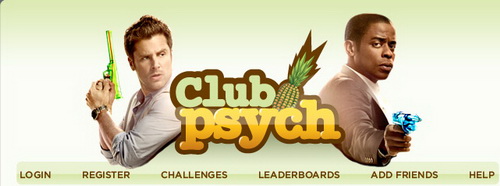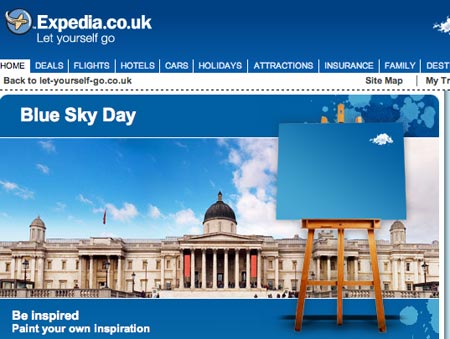详述五大品牌公司针对社交游戏领域的营销活动
对于社交游戏商业价值持怀疑态度者大有人在,但这丝毫无法阻挡大型品牌公司反驳这些批评者的错误观念。
大型品牌公司绞尽脑汁,希望能够充分利用庞大的社交游戏玩家群体(游戏邦注:社交游戏玩家2012年底有望达6870万)。品牌公司通过贴牌虚拟商品、整合广告和赞助以及结合数字和真实奖励的游戏体验朝游戏领域迈进。
例如,诸如Century 21之类的营销者已经开始使用使用贴牌虚拟商品(游戏邦注:供玩家购买的平价、无形道具,应用于数字游戏之中),从而获得公司品牌辨识度,顺应颇为有利可图的社交游戏发展趋势。据eMarketer预测,2011年美国游戏玩家仅通过购买虚拟商品就有望带来6.53亿美元营收,而到2012年这方面的营收将高达7.92亿。
下文主要阐述5大品牌公司如何借助社交游戏成功开展营销活动。
1.Century 21
为了将公司40年的老品牌推向大量购置房产的族群(游戏邦注:即年龄介于25-34岁的群体),住宅房地产公司Century 21今年4月初推出了公司首个社交游戏营销活动。
Century 21联合手机游戏公司ngmoco为《We City》玩家推出了贴牌虚拟商品,《We City》是一款城建游戏。贴有Century 21商标的商品包括摩天大楼、住宅及其他建筑,玩家通过添加新建筑晋升新等级,这款游戏兼容iPad、iPhone和iPod touch设备。
这一社交游戏营销活动已于4月26日结束,活动取得显著成效。Century 21首席营销主管Bev Thorne表示,92%的《We City》玩家在其虚拟城市中添加了贴有Century 21商标的虚拟建筑。她补充表示,“这就相当于用户的粘性比例。我们之所以认为活动取得成功也是综合了品牌调查结果、视频浏览率和应用下载量。”
Appssavvy(游戏邦注:其主通过数字社交活动建立起品牌和用户之间的联系)负责为Century 21的首次社交游戏营销活动策划和设计方案。Appssavvy对于在线社交游戏领域并不陌生,其早前曾为可口可乐、麦当劳、微软、雀巢和Frito-Lay公司策划过类似营销活动。
2.万事达信用卡公司
GamesThatGive(GTG)主要帮助品牌公司透过Facebook平台充分利用社交游戏的繁荣趋势。
GTG首席执行官Adam Archer表示,“Facebook游戏是个特别而强大的营销工具,能够为品牌带来病毒式传播、深层品牌植入和销售增长。”
GTG以慈善角度定制贴牌Facebook游戏。例如,GTG为万事达公司策划了《You Play, We Give》营销方案,玩家只要体验游戏,万事达公司就会为Junior Achievement Hudson Valley机构捐款10美分,这款游戏获得了3万条好评,回访玩家占总访问量的80%。玩家平均每次访问的游戏页面停留时间为45分钟。
活动的理念和执行同GTG其他大主顾百事可乐、Propel、星巴克和Quaker公司如出一辙,玩家每次只能够短时间体验贴牌Fcebook游戏,直到游戏弹出窗口要求玩家评价“喜爱”这款游戏,评价喜爱就能将捐款翻倍。
Archer表示,“玩家体验游戏不仅能够为慈善机构捐献大量资金,而且还能够帮助大型公司成功通过贴牌社交游戏将Facebook玩家转变为自己的顾客。”
3. Psych
美国网络电视节目网站Psych为粉丝创建了游戏网站Club Psych,玩家可以通过购买和分享游戏内容及同其他粉丝和游戏内容互动获得奖励。奖励包括虚拟道具和实际物品(游戏邦注:前者包括徽章、墙纸和数字音乐。后者包括海报和DVD)。
BunchBall(其游戏化了Psych体验)创始人和首席产品经理Rajat Paharia表示,“自推出该活动后,玩家浏览Psych网站的时间由14分钟增至22分钟;上季度页面的访问量从原来的900万增到1600万;网站的平均访问量由每月2次增至每月4.5次。
他表示,“美国网络网站的收视率(游戏邦注:针对18-34岁族群)也增长了40%。公司网络在Best Social-Media Loyalty活动中荣获AdAge Media Vanguard奖项。”
4. New York Public Library
今年4月初,纽约公共图书馆宣布将举办Find the Future: The Game活动,活动将于5月21日同大众见面。
玩家将通过使用手机应用在42街的Stephen A. Schwarzman Building完成相应任务。任务鼓励玩家深入探索图书馆和长达40英尺的书籍,”例如,玩家可能需要浏览Declaration of Independence的QR编码,然后回应创造性的短文提示。
图书馆百年纪念活动制作人Caro Llewellyn表示,“面对珍贵的历史物品,玩家必然有所感触。维基百科和谷歌十分神奇,但亲眼目睹这些物品着实能够产生巨大能量,真正激发创造力。”
500名事先挑选的玩家将能够参加游戏5月20日的发行活动,也就是游戏同玩家见面的前一天。
5. Expedia
旅游网站Expedia的《FriendTrips》游戏咋看似乎就是款简单的旅游比赛游戏。对于用户来说,他们需要做的就是点击“喜欢”页面,从13个景点中选择一个目的地,然后邀请5个好友参与同样的活动。
但对于Expedia来说,更重要的是玩家的5个好友也会变成网站粉丝,最初用户因此能够实现免费之旅。好友只要评论喜欢Expedia页面(游戏邦注:网站现有粉丝87万)也能够享受免费旅行。
Oxford Communications沟通战略家Christopher Stemborowski(他非代表Expedia,而是专注帮助品牌公司深入剖析社交游戏领域)表示,“就像Expedia要求6个喜欢评价而非1个才能进入游戏之中一样,品牌公司需要寻找方式授权现有社区吸收新会员。”
参与者能够进入游戏一次以上,并且还有机会使体验机会翻2倍或者3倍(游戏邦注:前者通过邀请25个好友,后者通过邀请邀请50个好友)。在每天的竞争中(活动截止至5月中旬),4名上传图片和分享自己参观某个特定景点原因的玩家将获得Expedia提供的250美元奖励。
Expedia Worldwide总裁Expedia Worldwide表示,“Expedia目前正着手创建强大在线社区,让用户能够相互分享自己的旅游经历。我相信价值100万美元的免费旅行对于我们的Facebook好友来说将是重要的人生经历。”
总结
Stemborowski表示,营销者需要瞄准既有的活跃消费者。
他表示,“功能手机用户不可能为了体验《Find the Future》而购买只能手机,而非Facebook用户也不可能为了参与《FriendTrip》而注册帐户。尽可能准确判断自己希望获得的用户身处哪个社交空间,然后设计能够吸引他们的游戏,从而使他们能够按照自己习惯的方式活动。”
他表示,“好的社交游戏通常都能够充分理解用户的社交方式。营销者的任务就是把每个日常社交行为转变成对品牌公司而言有意义的活动。”(本文为游戏邦/gamerboom.com编译,转载请注明来源:游戏邦)
Why 5 Big Brand Marketing Campaigns Are Betting Big on Social Gaming
Skeptics of social gaming for business purposes exist, but that’s not stopping some big brands from disproving those critics’ misconceptions.
Big brands are finding ways to leverage the enormous social gaming population (which is expected to reach 68.7 million players by the end of 2012). They’re jumping into the game — so to speak — with branded virtual goods, integrated ads and offers as well as games that combine digital and real-world incentives.
For example, marketers like Century 21 have started using branded virtual goods — inexpensive, non-tangible items people buy to use in digital games — in order to gain brand recognition and tap into the profitable social gaming trend. In 2011, U.S. gamers will spark $653 million in revenue solely from purchasing virtual items, predicts research aggregator eMarketer. That figure is expected to reach $792 million in 2012.
Here are five brands that are successfully using social gaming in their marketing campaigns. If you know of any other stellar campaigns, please share them in the comments section.
1. Century 21
To try to make its 40-year-old brand appeal to the age group that buys the most homes — people who are 25 to 34 — residential real estate organization Century 21 launched its first social gaming campaign in early April.
Century 21 partnered with mobile gaming company ngmoco to create branded virtual goods that players could use in ngmoco’s We City [iTunes link], a game in which players build cities. The Century 21-branded virtual goods comprised of skyscrapers, homes and other buildings that players added to progress through the game, which was compatible with the iPad, iPhone and iPod touch.
The social gaming campaign ended April 26, and it has paid off. Century 21 Chief Marketing Officer Bev Thorne says 92% of We City players have incorporated Century 21-branded structures into their virtual cities. “That’s quite the engagement rate,” she adds. “We’ll also be basing our success on brand survey results, video views and app downloads.”
Appssavvy, a company that focuses on connecting brands to people through digital social activities, developed the strategy and design for Century 21′s first attempt at leveraging social gaming for marketing. Appssavvy is no stranger to the online social realm, as it already has planned similar campaigns for big brands such as Coca-Cola, McDonald’s, Microsoft, Nestle and Frito-Lay.
2. MasterCard
GamesThatGive is one company helping brands take advantage of the social gaming boom via Facebook.
“Games on Facebook are a special and powerful marketing tool that can easily bring a brand virality, deep brand engagement and sales growth,” says Adam Archer, CEO of GamesThatGive (GTG).
GTG makes custom-branded Facebook games with charitable twist. For example, its You Play, We Give campaign for MasterCard donates as much as 10 cents to Junior Achievement Hudson Valley for every minute a person plays the game, which has more than 30,000 Likes and gets more than 80% of visits from returning visitors. On average, gamers spend 45 minutes on the game page each visit.
The concept and execution are the same for GTG’s other big-name clients — Pepsi, Propel, Starbucks and Quaker. A user can play those companies’ custom-branded games on Facebook for a short amount a time until a pop-up box appears requesting that the user “like” the company in order to “double your donation.”
“Not only are thousands of dollars going to charity as a result of people playing games, but large companies are successfully using branded social games to turn Facebook fans into customers,” Archer says.
3. Psych
USA Network’s TV show Psych has a game-heavy website for its fans called Club Psych, where users earn rewards for consuming and sharing content, as well as interacting with fellow fans and content. The rewards range from virtual items (badges, wallpapers, digital music) to physical ones (posters, DVD sets).
“After the launch, users’ time on the Psych website increased from an average of 14 minutes to 22 minutes; pageviews were up to 16 million from 9 million in the previous season; and average site visits increased from 2 times per month to around 4.5 times month,” says Rajat Paharia, founder and chief product officer for BunchBall, which “gamified” the Psych experience.
“USA Networks also saw viewership of the show — in the 18 to 34 demographic — rise 40%, and it was awarded an AdAge Media Vanguard award for Best Social-Media Loyalty program,” he says.
4. New York Public Library
In early April, the New York Public Library revealed a digital campaign called Find the Future: The Game, which goes live to the public on May 21.
Using a mobile app, players will complete tasks at the Stephen A. Schwarzman Building on 42nd Street. The tasks encourage players to explore the library and “40 miles of books.” For example, a player might be tasked to scan a QR code located at the Declaration of Independence and then respond to a creative essay prompt.
“There is something to be said for being in the presence of rare, historic objects,” Caro Llewellyn, producer of the Library’s Centennial celebration, told Mashable in April. “Wikipedia and Google are fantastic, but to see objects like these in the flesh has enormous power and can truly inspire creativity.”
Five hundred pre-selected people will participate in the game’s launch on May 20, one day before the game goes live to the public.
5. Expedia
The FriendTrips game from travel website Expedia at first glance appears to be a simple travel sweepstakes. For the user, it is — as all he or she has to do is “like” the Page, choose one of 13 destinations and invite five friends to do the same.
But for Expedia, it’s much more because a user’s five friends must also become fans of the page in order for the initial user to be entered into the drawing for a free trip. The friends are entered in the drawing upon “liking” the Expedia Page, which has more than 870,000 fans.
“Like Expedia, which is forcing six ‘likes’ to enter its game instead of one, brands must find ways to empower … their existing community to recruit new members,” says Oxford Communications communication strategist Christopher Stemborowski, who doesn’t represent Expedia but keeps his pulse on social gaming for brands.
Participants can enter the game more than once with the chance to double (by inviting 25 friends) or triple (by inviting 50 friends) their chances. Every day of the competition, which ends mid-May, Expedia also awards $250 to four players who submit pictures and share stories of why they want to visit a particular featured destination.
“Expedia is building a powerful online community where people can share their travel experiences with one another and with all of our travelers,” Expedia Worldwide, president of Expedia Worldwide, said in a statement when the game launched in March. “I believe a million dollars’ worth of free travel will be a magnificent experience for our friends on Facebook.”
Conclusion
Marketers have to meet consumers where they are already active, Stemborowski advises.
“People who currently use feature phones are not likely to purchase a smartphone just to take part in Find the Future, and someone not on Facebook is not likely to join just to take part in FriendTrip,” he says. “Decide, as specifically as possible, in which social spaces the audience you want to reach is spending their time. Then design a game that reaches them there and allows them to behave the way they do naturally.
“Great social games begin with an obsessive understanding of how people are socializing. The marketers’ task is to translate everyday socializing behaviors into meaningful actions for their brands.”(Source:mashable)












































 闽公网安备35020302001549号
闽公网安备35020302001549号